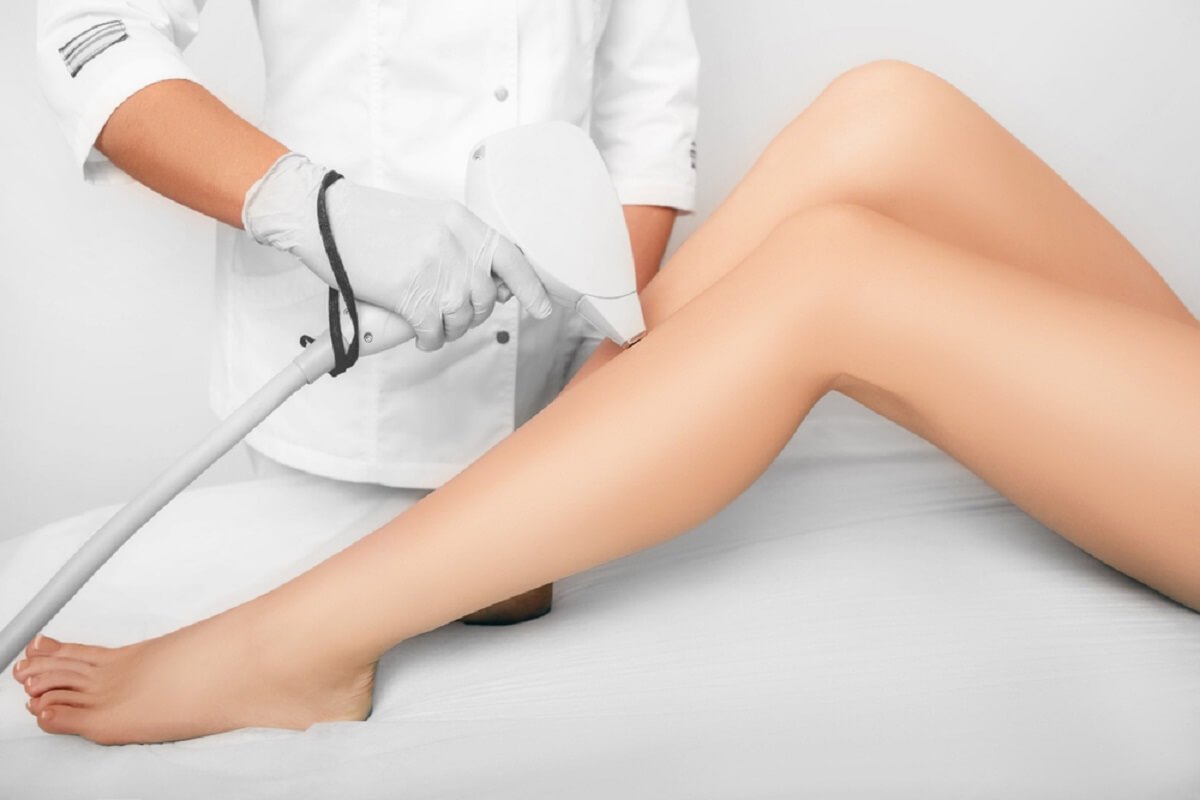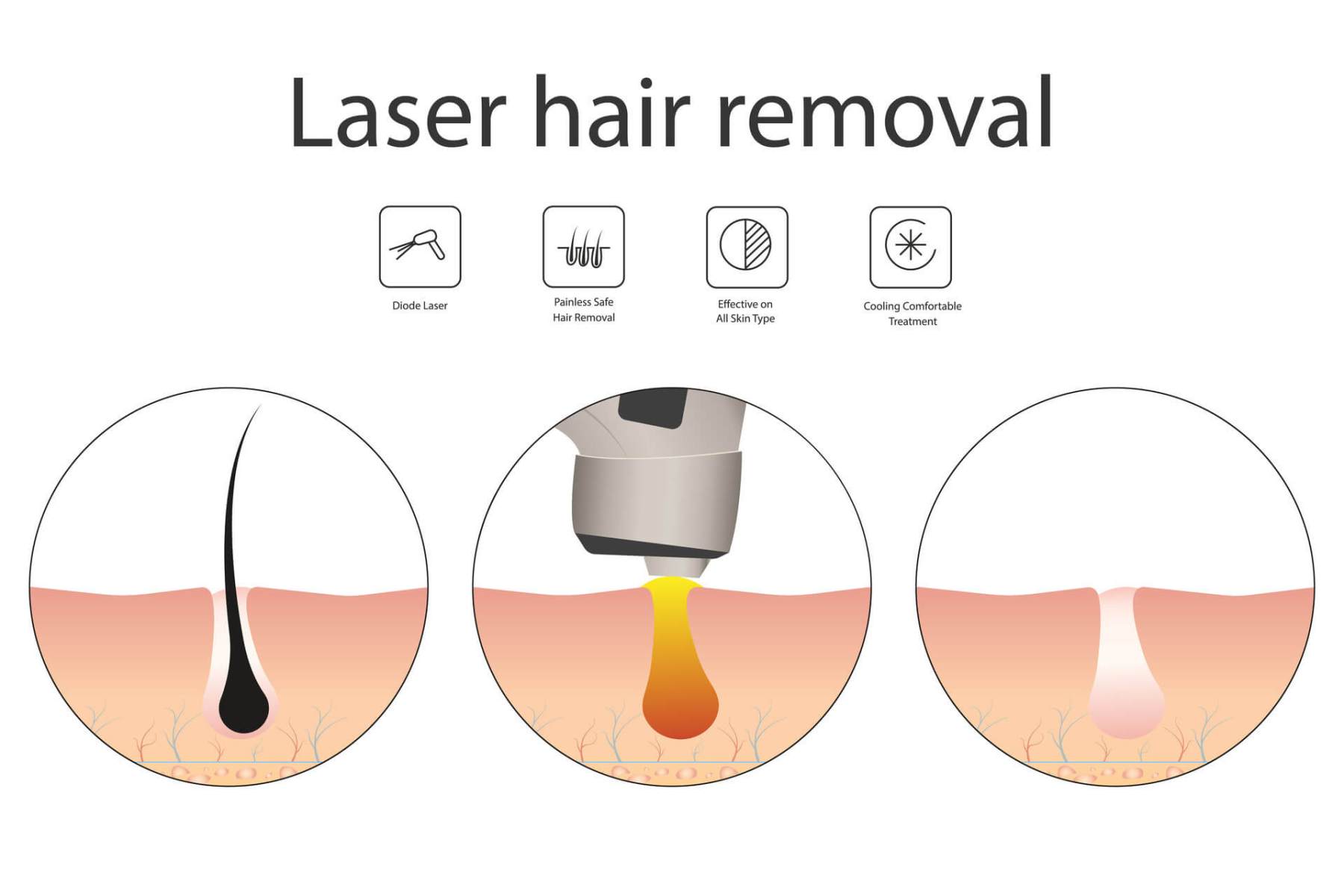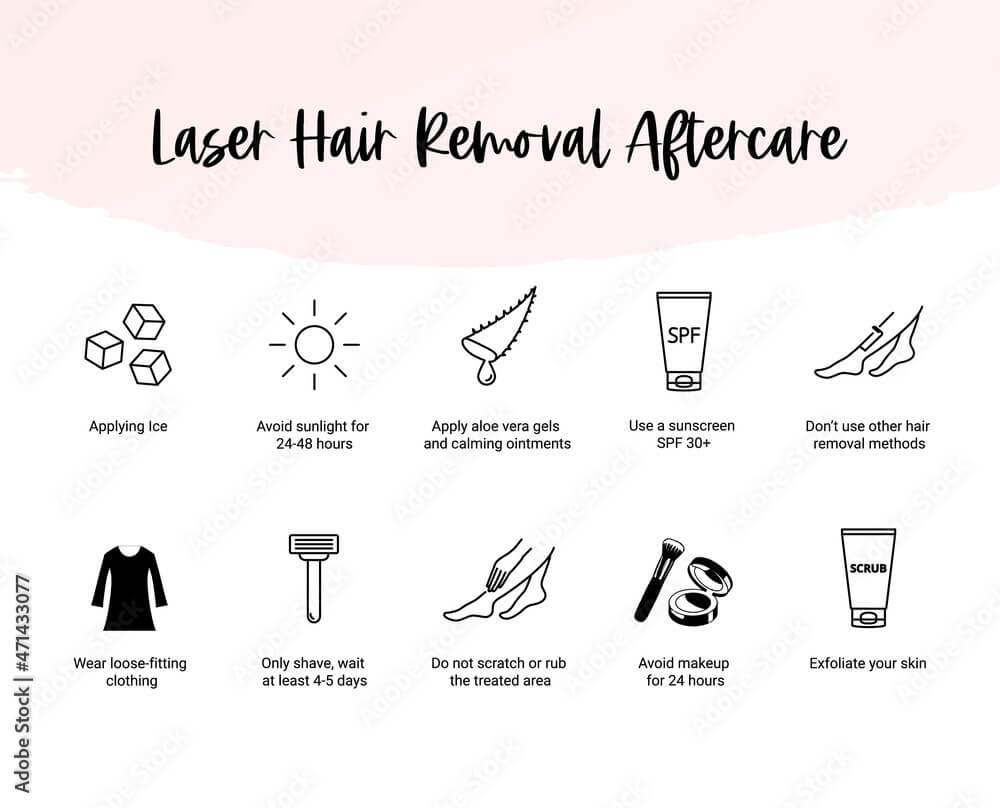Laser hair removal has become an increasingly popular option for those seeking smooth, hair-free skin without needing constant shaving, waxing, or plucking. This innovative procedure uses highly concentrated light to target and destroy hair follicles, significantly reducing hair growth over time. Before committing, it’s essential to have a clear understanding of the laser hair removal process, along with what to expect in terms of results, costs, and the choice of professionals.

As with any cosmetic treatment, it’s essential to thoroughly research laser hair removal to ensure it’s the right choice for your individual needs and preferences. In this article, we’ll explore everything you need to know about laser hair removal, from the science behind the procedure to post-treatment care and expected results. We’ll also address frequently asked questions and provide helpful guidance on finding the right professional to perform your treatment.
Key Takeaways
- Laser hair removal is a long-lasting solution to unwanted hair growth compared to traditional methods such as shaving and waxing.
- Understanding the procedure, post-treatment care, and expected results can help ensure your satisfaction with laser hair removal.
- Evaluating costs and commitment and choosing the proper professional are essential for making an informed decision.
Understanding Laser Hair Removal

The Science Behind the Treatment
Laser hair removal is a popular cosmetic treatment involving lasers to target and destroy the pigment (melanin) within the hair follicle. This process disables the follicle’s ability to regrow hair. When you undergo laser hair removal, the energy from the laser is absorbed by the melanin in the hair, which then converts to heat. This heat damages the hair follicle, leading to a significant reduction in hair growth over time.
Types of Lasers and Their Effectiveness
Various types of lasers are used in hair removal treatments, each with a different wavelength of light. The three most common lasers are:
- Nd Laser: This type of laser has a longer wavelength, making it suitable for treating all skin tones, including darker skin types. However, the Nd laser may be less effective on finer or lighter-colored hair.
- Diode Laser: With a shorter wavelength than the Nd laser, the diode laser effectively treats a wide range of skin tones and hair colors. It’s incredibly efficient for treating larger body areas but may not be as suitable for very dark or tanned skin.
- Alexandrite Laser: This laser is ideal for treating light to medium skin tones with dark hair. It has a quick treatment time but may cause more discomfort than the other lasers.
Each laser type is effective, but proper treatment can lead to optimal results. It is essential to select a certified technician and consult with them to determine the best laser type for your skin tone and hair color.
Suitability Across Different Skin Types and Hair Colors
Laser hair removal works best on darker and lighter skin tones, with a higher contrast between the melanin in the hair and the surrounding skin. Here’s a brief overview of the suitability across different skin types and hair colors:
| Skin Tone | Hair Color | Suitability | Effective Laser Types |
|---|---|---|---|
| Light (Fitzpatrick I – II) | Dark | High | Alexandrite, Diode |
| Medium (Fitzpatrick III) | Dark | High | Alexandrite, Diode |
| Medium – Dark (Fitzpatrick IV) | Dark | Moderate | Nd, Diode |
| Dark (Fitzpatrick V – VI) | Dark | Moderate | Nd |
| Light – Medium | Light or Fine | Low | Alexandrite, Diode |
While laser hair removal may not be effective for everyone, technological advancements are making it increasingly accessible for various skin types and hair colors. It’s crucial to consult with a professional to determine if laser hair removal is the right choice for you.
The Laser Hair Removal Procedure

Initial Consultation
During the initial consultation, your practitioner will assess your hair and skin type to determine the most suitable laser hair removal method. They will also discuss any possible risks, side effects, and costs. You might also need a patch test to ensure the treatment is compatible with your skin. Feel free to ask questions and address any concerns you may have during this stage.
Preparing for Your Appointment
To prepare for your laser hair removal appointment, follow these steps:
- Shave: Shave the targeted area 24 hours before your appointment to ensure proper laser penetration.
- Avoid sun exposure: To prevent skin pigmentation complications, keep the area out of sunlight for four to six weeks before treatment.
- Avoid other hair removal methods: Refrain from waxing, plucking, or using depilatory creams for at least four weeks before the treatment.
- Discuss medications: Inform your practitioner of any medicines or skin products you use that could affect your treatment outcome.
What to Expect During the Session
The laser hair removal session involves the following steps:
- Numbing: A numbing cream may be applied to the targeted area before the treatment to minimize pain or discomfort.
- Laser application: The practitioner will use a hand-held device to administer the laser pulses to the treated area.
- Cooling system: A cooling device or gel may be applied during the procedure to protect your skin and alleviate discomfort.
While pain during the laser hair removal session varies from person to person, most individuals describe it as a mild, bearable stinging sensation. The duration may vary depending on the size of the area being treated, but most sessions last between 30 minutes to an hour. After the treatment, you may experience temporary swelling or redness, which should subside within a few hours or days. Your practitioner may also provide specific aftercare instructions to ensure optimal results.
Post-Treatment Care and Expected Results

Managing Aftercare and Side Effects
After your laser hair removal session, taking proper care of the treated area is essential to minimize side effects and achieve the best possible results. Remember that some redness and swelling are normal and should subside within a few hours to a few days. Follow these aftercare tips to manage any side effects and promote optimal healing:
- Avoid sun exposure: Protect the treated area from direct sunlight for at least two weeks by wearing loose clothing and using a broad-spectrum SPF 30 or higher sunscreen.
- Gently cleanse: Clean the treated area with mild, fragrance-free soap and lukewarm water. Avoid scrubbing, as this may irritate.
- Soothe the skin: Apply a cooling gel like aloe vera to alleviate discomfort or inflammation.
- Avoid heat: Refrain from using hot tubs, saunas, or engaging in activities that may cause excessive sweating for at least 48 hours.
In rare cases, more severe side effects like burns or hyperpigmentation may occur. Contact your practitioner immediately if you experience any of these or other unusual symptoms.
Anticipating and Recognizing Changes in Hair Growth
After your first laser hair removal session, you’ll likely notice changes in hair growth patterns. These may include:
- Shedding: Expect to see hair shed from the treated area within 1–3 weeks. This is a normal process, as the follicles release the now-damaged hairs.
- Reduced growth: As treatments progress, hair growth will decrease. Total removal may require multiple sessions, generally 4–8 weeks apart.
- Ingrown hairs: Laser hair removal may reduce the occurrence of ingrown hairs compared to other hair removal methods like shaving or waxing.
- Regrowth: In some cases, fine, light-colored hairs may regrow. These will be much less noticeable than before treatment.
Consistently attending your scheduled sessions and following your practitioner’s advice will help you achieve the best possible results. With proper aftercare and realistic expectations, laser hair removal can give you smoother, hair-free skin.
Evaluating Costs and Commitment
Determining the Number of Treatments Needed
When considering laser hair removal, one of the initial factors to assess is the total number of sessions you will need to achieve the desired results. Generally, most individuals require 4-6 sessions for permanent hair reduction. This is because hair grows in different cycles, and the laser treatment targets hairs in their active growth stage.
Factors influencing the number of treatments needed include hair color, skin tone, and the body area being treated. For instance, coarser, darker hair typically responds better to laser treatments, and areas with thicker hair growth might require more sessions.
To get a clearer idea of the necessary sessions, consult a professional who can evaluate your case and provide a personalized recommendation.
Long-Term Financial Considerations
While laser hair removal may seem expensive initially, evaluating the long-term financial commitment is essential. Comparing the costs of laser treatments to the money spent on temporary hair removal methods like shaving, waxing, or depilatory creams, you may find that laser hair removal is a worthwhile investment. Remember that after several sessions, you can experience permanent hair reduction.
However, it is critical to remember that future touch-ups might be necessary. Touch-up sessions are typically less frequent, occurring every few years or as needed. Additionally, touch-up sessions are often less expensive, requiring fewer sessions.
Here’s an approximate cost comparison table:
| Laser Hair Removal | Waxing | Shaving |
|---|---|---|
| $200-$500 per session | $25-$75 per session | $5-$25 monthly |
When deciding whether laser hair removal is proper for you, consider your hair removal goals, schedule, and budget. Consult a licensed professional for accurate cost estimates and personalized recommendations tailored to your needs.
Choosing the Right Professional

The Importance of Qualified Practitioners
Choosing a qualified practitioner for your laser hair removal procedure is crucial. A board-certified dermatologist has the expertise and experience to ensure a safe and effective treatment. Dermatology involves extensive training in skin conditions and procedures, so opting for a certified dermatologist increases the likelihood of achieving your desired results with minimal risks.
When selecting a professional for your laser hair removal, consider the following:
- Certification: Ensure they are a board-certified dermatologist.
- Experience: Look for a practitioner with a history of successful laser hair removal treatments.
- Reputation: Check reviews and ask for recommendations to gauge their reputation in the field.
Questions to Ask Your Dermatologist
Before committing to a laser hair removal procedure, discussing your specific needs and concerns with your chosen dermatologist is essential. Here are a few questions you can ask to make an informed decision:
- Are you a board-certified dermatologist? Verifying their certification will give you confidence in the practitioner’s expertise.
- How many laser hair removal procedures have you performed? This will help you assess their level of experience.
- What type of laser will you be using for my treatment? Different lasers are more effective for various skin types, so knowing which laser will be used is essential for understanding your treatment.
- What should I do before my appointments? Proper pre-treatment care can help optimize your results and minimize potential side effects.
- How many sessions will I need to achieve the desired results? This can vary depending on your individual hair and skin type.
Remember, selecting a qualified and experienced dermatologist for your laser hair removal procedure will help ensure a safe, effective, and satisfying experience. Don’t hesitate to ask questions and gather all the necessary information to make the best decision for your needs.
Frequently Asked Questions
How should one prepare for a laser hair removal session?
Before your laser hair removal session, avoid sun exposure for at least two weeks, as this can increase the risk of complications. Shave the treatment area 24 hours before your appointment, but refrain from waxing, tweezing, or using depilatory creams, as the laser targets the hair within the follicle. It’s also important to avoid using skin care products containing retinol or glycolic acid for at least one week before treatment.
What can be expected during and after a laser hair removal treatment?
You may experience a slight stinging or burning sensation during the treatment, but applying a cooling gel or device typically eases this. Immediately after, you may notice redness and swelling, which should subside within a few hours. Apply a soothing gel like aloe vera or a cold compress to alleviate discomfort. Avoid sun exposure and exercise for at least 48 hours. You may notice shedding of the treated hair within 1-3 weeks following the session.
What is the average cost associated with laser hair removal?
The cost of laser hair removal can vary depending on factors like the size of the treatment area and the number of sessions required. On average, individual sessions can range between $200 and $400, but many clinics offer package deals or payment plans to make the process more affordable. To get the most accurate pricing information, consult a licensed professional in your area.
Is laser hair removal a permanent solution for hair reduction?
Laser hair removal provides long-lasting hair reduction, but it’s not always permanent. Most people experience 80-90% hair reduction after completing the recommended number of sessions, which usually ranges from 5-8 sessions. However, hormonal changes or other factors can cause hair to regrow, making maintenance treatments necessary every 6-12 months.
Can laser hair removal treatments have any adverse effects?
The risk of adverse effects is low when performed by a qualified professional. Common side effects include redness, swelling, and temporary skin irritation. Rarely, more severe complications like burns, blisters, changes in skin pigmentation, or scarring can occur. It’s crucial to follow pre- and post-treatment guidelines provided by your practitioner to minimize the risk of these effects.
How does skin color and hair type affect the efficacy of laser hair removal?
Laser hair removal is most effective on individuals with light skin and dark hair due to the contrast between the melanin in the hair and surrounding skin. This allows the laser to selectively target hair follicles without damaging the skin. However, newer laser technology has improved the efficacy of laser hair removal on people with darker skin tones and lighter hair colors. Make sure to consult with a professional to determine the most suitable laser technology for your specific hair and skin type.